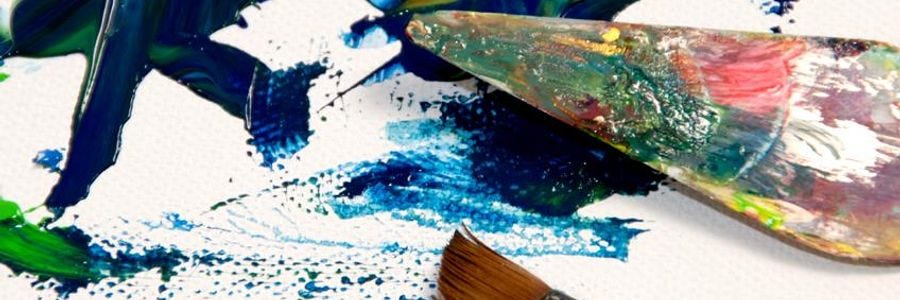Have you ever looked at a painting you have just completed with a little disappointment? You got the composition right, your colour scheme works and the techniques are tried and tested, but…it looks less than perfect, and you just can’t put your finger on why. In a lot of cases this ‘unsatisfactory result’ can be as simple as a flawed brush stroke technique. Below we outline some key brushstrokes and how best to use them.
Drybrushing: When paint is applied to a canvas or work surface using a brush charged with very little undiluted paint you’ll create a strong current of colour. Your lines will be uneven as they won’t have medium to soften the edges, but this can result in a purposeful painterly effect. Dry brush application lends texture and movement to lines. It is also a great way to achieve ‘broken colour’ so that your underlying colour can show through the areas of missing tone and effectively show shine on a surface.
Wash: You can treat acrylic and oil paint like watercolour when you dilute the paint with enough medium. You can then use the thinned down paint to apply translucent washes on your surface. However, unlike watercolour paint, acrylic and oil paint will set permanently. Washes can be built up on each other to create richer tones.
Stippling: Creating an assemblage of tiny dots can be an effective way to produce imagery – it is a great way to display texture and forms a coat with subtle variations in colour. You can utilise this technique by applying colour with a brush tip or dabbing it on with the end of a brush handle.
Flicking: A variety of interesting effects can be suggested by flicking paint, from creating a cosmos to adding texture for a wood-like finish, adding subtle shadow areas. It works best to thin the paint to the viscosity of cream and then flick it with your finger from a hog hair bristle brush or an old tooth brush. The thinner you make your paint the finer the flecks will be.
Sponging: Accents of colour can be dabbed on using the corner of a sponge or even a piece of paper towel. Think of it like sponge painting – dabbing adds a lot of texture and movement to a piece and is also a great way to block in large areas. A dry sponge can also be used to remove excess colour with great effect.
Palette Knife: Applying paint with a palette knife is an instant way to create a rich impasto look for your work. There are many palette knife shapes and sizes available – each delivering a unique application of paint. It might seem intimidating or advanced, but it’s a technique that’s accessible and achievable, even for beginners. Simply use the palette knife to scrape up a bit of paint and apply it to your work surface. The thickness of the coat can be adjusted with a knife accordingly. In fact, some people paint their whole paintings using only a single palette knife.
Notes on Holding Your Brush: How you hold your brush can have a huge impact on how your brushstrokes look. The most instinctive way to hold a brush is like you would hold a pen. While this is fine for detailed work, it limits the ability to achieve free strokes for general work. A more versatile way to hold the brush is to wrap your hand around the handle half-way down the brush and move your arm from the shoulder. This will help you to facilitate flowing arcs.
Reference: Acrylic Painting Techniques, Jessie Oleson Moore 2014.
View related products





























